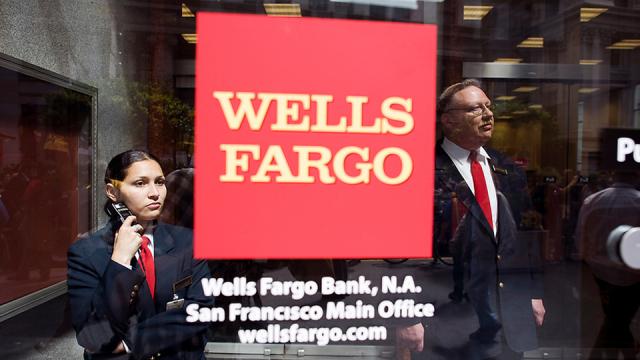
Photo: Michael Short. Occupy SF protest of Wells Fargo Shareholders meeting in the financial district of San Francisco, CA Tuesday April 24th, 2012.
Disrupting business-as-usual has characterized Occupy tactics since the movement’s earliest days. From encampments in prominent plazas to mass marches that impede the flow of traffic and capital in major cities, the aim has been to visibly and physically unsettle a system symbolized by glistening financial districts and their suited denizens. As such, the new plan to disrupt shareholder meetings of major corporations seems an obvious tack for Occupy and its allies—both as a means to garner attention and to take the action directly to the corporate leviathans so central to Occupy's grievances.
On Tuesday, several hundred Occupy participants, union members, housing justice advocates and individuals hurt by foreclosures descended on the Wells Fargo annual summit in San Francisco. According to reports, 15 people were arrested inside the meeting of 300 shareholders (where standing room only meant that many individuals with a stake in the banking giant or their proxies could not enter the venue). The disrupters had bought stock in Wells Fargo in order to gain access; they shouted out that the bank should pay its fair share of corporate taxes and vociferously decried investments in private prisons, according to reports. Over the course of the day there were 24 arrests, as police in riot gear flanked the Merchants Exchange Building, which was surrounded by nearly 2,000 demonstrators and one giant inflatable rat.
Participants in the action were keen to spread images via social media of the heavy police presence around the summit. Live stream videographer Justin Beck interviewed a young man who, having been turned away from the shareholders meeting, noted the wall of police and remarked, “It’s pretty clear who they protect, who they serve.”
Many demonstrators described the day as a success, but so too did Wells Fargo, who announced record profits. CEO John Stumpf may have had his speech interrupted, but he was also awarded a pay package of $19.8 million. Clearly, the metrics of success when it comes to protest actions like this remain imprecise.
However, the demonstration was successful in galvanizing a diverse support base. The disruption inside and mobilizations outside the building were planned by a broad coalition from Occupy San Francisco, labor unions and dozens of community groups operating under the banner of “99% Power.” It would be too simple to call this Occupy 2.0 or “the next phase for Occupy” — Occupy has always been an amorphous and dynamic assemblage—what we are seeing in the groups coming together under the “99% Power” banner is yet another iteration of people seeking direct action and more radical tactics to challenge corporate hegemony.
Further shareholder summit disruptions are on the calendar for Occupy, labor groups and for MoveOn’s 99% Spring coalition (and indeed the intersections of the above), such as Wednesday's GE shareholder meeting in Detroit. Whether, as some fear, the 99% Spring actions will attempt to neutralize the more radical tactics preferred by some Occupy participants is yet to be seen. Right now all eyes seem to be on the next target — the Bank of America shareholder meeting on May 9 in Charlotte, North Carolina, where thousands are expected to turn out.
3 WAYS TO SHOW YOUR SUPPORT
- Log in to post comments











